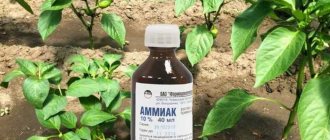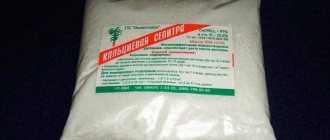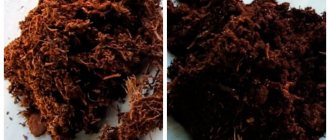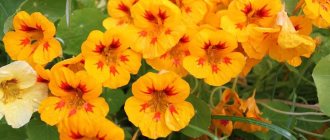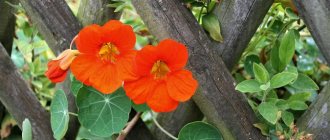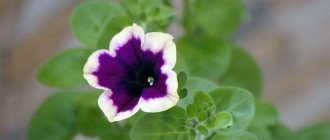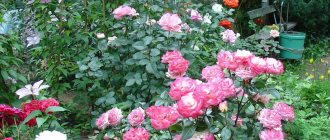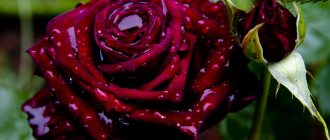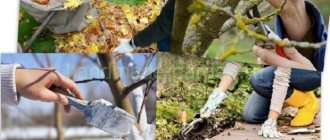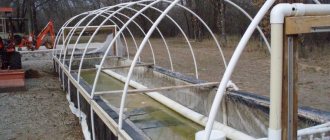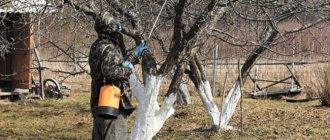It looks like splashes of sun or bright lanterns flaming in emerald foliage. Planting nasturtiums and caring for them in the open ground were once described in great detail, because the flower was considered one of the favorites in the gardening community. Then it was somewhat replaced by more elegant and hardy annuals. Today, the flirtatious resident of the flowerbed is back in fashion - just as cheerful, cheerful, and showing off her new outfits.
Yellow-orange color scheme – signature for nasturtium
Popular types and varieties
Nasturtium appeared in Europe in the 16th century. It received its Latin name for its resemblance to military armor - the leaves resembled a small shield, and the bright flowers resembled a helmet. The plant quickly spread throughout the gardens of the Old World.
According to various sources, the culture includes from 50 to 90 annual and perennial herbaceous and semi-shrub species. All have thick, fleshy shoots. The stems can be highly branched and have an erect or creeping shape. The leaves are round, shield-shaped, located on long petioles. Single fragrant flowers grow in the axils of the leaves. In the conditions of the Central zone, nasturtium does not overwinter in open ground and is grown as an annual.
Large nasturtium
Semi-shrub forms of this species grow up to 30–40 cm; in climbing plants, shoots grow up to 1.5–2 m. Large nasturtium is distinguished by a variety of colors of inflorescences. In addition to the usual yellow and orange flowers, varieties with pale pink and dark red inflorescences have been bred. The variegated flowers look unusual - their petals are covered with streaks and spots. The shape of the flowers can be either simple or double.
Nasturtium " Ladybug " is distinguished by its early flowering. Pale yellow, corrugated flowers with cherry speckles on the petals bloom on long peduncles.
“ Salmon baby ” is a variety with neat low bushes up to 20–25 cm. The leaves of this nasturtium are dark green, the flowers are semi-double, salmon-colored.
Nasturtium variety Peach Melba
“ Peach Melba ” (Peach Melba) is a low-growing plant 20–25 cm high. The flowers are semi-double, cream-colored petals with orange spots at the base.
Small nasturtium
Plant 15–35 cm high with thin branched shoots. The leaves are round, petiolate. Small flowers with a diameter of 3 cm are painted yellow. Blooms from early summer to October.
Nasturtium " Cherry Rose " got its name from the pink-red hue of its double inflorescences. The plant is medium-sized, 30 cm high.
Nasturtium variety Black Velvet
“ Black Velvet ” is a nasturtium with an unusual color of inflorescences. They are dark burgundy, almost black. The bushes are medium-sized, reaching a height of 30 cm.
Nasturtium shieldbearing
Nasturtium shieldbearing
Forms a subshrub with creeping shoots up to 4 m long. Flowering time is June-October.
The most famous variety is “ Lucifer ” with bright green leaves and red-orange simple flowers. The bush is compact, only 20–25 cm high.
Nasturtium cultivated
The most common species in culture. Obtained from crossing large nasturtium and shield-bearing nasturtium. It is distinguished by a variety of varieties from dwarf, 15–20 cm high, to creeping, with shoots up to 4 m long. All varieties bloom profusely from June until the first frost. The color of the flowers can be yellow, orange or red. The inflorescences of cultivated nasturtium are simple or double in shape, up to 5 cm in diameter, with a pleasant aroma.
“ Golden Globe ” is a variety with large double golden-yellow flowers up to 6 cm in diameter. The bushes grow up to 25 cm.
Nasturtium variety Kaiserin von Indien
“ Kaiserin von Indien ” (Kaiserin von Indien) is a compact, rounded variety 20–25 cm high. The leaves are small, purple in color, gray-green on the underside. The flowers are simple, red in color with dark stripes.
" Moonlight " is a variety with long climbing stems. They can grow up to 2–3 m. The flowers are pale yellow. Cultivated nasturtium is often used for planting in hanging baskets or flowerpots.
Foreign nasturtium
An annual plant with long shoots up to 3–4 m. This nasturtium grows quickly and is excellent for vertical decoration; it easily entwines outbuildings, pergolas, and gazebos. The flowers are small, bright yellow, corrugated in shape. Blooms from July to late autumn.
Nasturtium variety Ptashechka
The shape of " Bird " nasturtium flowers is not similar to other types. They are small, corrugated, light yellow in color with green spurs. The stems quickly grow up to 3.5 m.
When to sow Nasturtium seedlings in 2022 according to the lunar calendar?
You can choose a favorable time for sowing seeds for seedlings for further cultivation using the lunar calendar.
Favorable days for sowing nasturtium in 2022
- in March: from the 14th to the 27th of the month;
- in April: from the 13th to the 26th of the month;
- in May: from the 12th to the 25th of the month;
- in June: (directly into the soil) from the 11th to the 23rd.
Bad days for sowing nasturtium seeds in 2022
- in March: 13, 28;
- in April: 12, 27;
- in May: 11, 26;
- in June: (in the ground) 10, 24.
Growing from seeds
Growing nasturtium is easy; even inexperienced gardeners can cope with it. For sowing seedlings, universal ready-made soil for flowers or a mixture of garden soil, peat and sand in equal parts is suitable.
Before sowing, the seeds are soaked in warm water or a solution of growth stimulants for 10–12 hours. Nasturtium does not tolerate transplantation well; its roots are delicate and do not recover well when damaged. Therefore, when growing through seedlings, it is better not to pick them up, but to immediately sow them in separate plastic or peat cups.
A seed is placed in each of them, covered with soil and watered. The pots are covered with film and placed in a warm place. Shoots appear within 10–14 days. Water the seedlings as the soil dries. To prevent it from stretching out, the pots are placed on the lightest windowsills or on a glazed balcony.
Marigold
The yellow-orange heads of marigolds can be found in many areas and flower beds. Gardeners love them for their unpretentiousness and abundant long-lasting flowering. But not everyone knows that these plants also have other, perhaps more significant, advantages.
Marigolds secrete phytoncides, which have a detrimental effect on many pathogens of fungal diseases, nematodes and other small soil worms. Plant marigolds next to potatoes and tomatoes, and these dangerous pests will bypass them.
These flowers protect not only representatives of the Solanaceae family, but also other plants. They repel insect pests such as cabbage whites, onion flies, weevils, cutworms, etc.
Marigolds planted around the perimeter or between the beds will protect cabbage, onions, peas and garden strawberries from their malicious eaters. The infusion of the plant can be used to treat fruit trees and shrubs affected by aphids.
To prepare an effective remedy against colonies of these pests, you need to fill half a bucket of crushed marigolds to the top with warm water (40-60°C) and leave for two days. Then add 40 ml of liquid soap to the strained infusion and treat the affected plants with it. This product can also disinfect gladioli planting material.
In the fall, crushed marigolds can be embedded in the soil: they will improve its health, because are a natural antiseptic.
You can grow marigolds in seedlings, sowing their seeds in containers from mid-March to mid-April.
Choosing a place and soil for planting
For planting nasturtiums, choose sunny and wind-protected areas. Foreign nasturtium can be planted in partial shade. In shady corners, flowering will be weak and the shoots will be long and thin.
The soil should be moderately fertile without excess nitrogen fertilizers. Nasturtium will grow best in loamy or sandy loam soils. If there is an excess of mineral fertilizers in the soil, nasturtium will produce more green leaves than flowers.
Before planting, do not forget about drainage. The soil should allow water and air to pass through well; the plant does not like stagnant moisture.
Calendula
Calendula, which experienced gardeners try to plant throughout the entire garden, can also improve the health of the entire garden. It effectively resists the pathogens of gray rot, prevents the development of blackleg and other fungal diseases.
The phytoncides secreted by calendula repel ticks and bedbugs, suppress asparagus rattle, hawkmoth caterpillars and many types of aphids. You can also treat affected plants with its infusion (pour 200 g of crushed flowers into 1 liter of water and leave in a dark place for 5 days, dilute the strained product with another 1 liter of water).
Calendula is also an excellent green manure. It can be embedded in the ground, placed in compost and used to create warm beds. Marigolds disinfect the soil from pathogens. Planted next to roses, they will protect the “queen of flowers” from many diseases.
Calendula also has other beneficial properties.
Planting in open ground
Seedlings are planted in open ground in the first ten days of June, depending on the weather. Low-growing plants are planted at intervals of 20–25 cm, long-climbing plants – 40–45 cm.
If the air temperature is unstable, then at night the plantings are protected from the cold with covering material. Nasturtium is heat-loving, and for young plants, cold snaps and frosts at night are a big stress.
In the central zone, nasturtium is sown in open ground in the last ten days of May. The main advantage of sowing in open ground over the seedling method is the minimal risk of damage. The plants will be immediately planted in a permanent place, their root system will not be damaged during transplantation. There is no need to rush with sowing - the soil should warm up well. Even short temperatures of 0°C can kill tender sprouts.
The seeds are pre-soaked, as with the seedling method. In the rows, holes are marked every 30–35 cm, 2–4 seeds are placed in each at a depth of 2–3 cm. After sowing, the beds are watered. Flowering at this time of sowing will begin at the end of June.
To get flowering plants 2-3 weeks earlier, planting dates are shifted. To do this, you need to prepare the ground. The earth is watered with hot water. Sowing is carried out in heated soil and covered with film. The emerging seedlings are ventilated and watered with warm water, avoiding waterlogging. The shelter is removed in the first ten days of June. Seed germination is negatively affected by cold air, waterlogging, deep seeding, and sowing in heavy clay soils.
Chamomile
Hardly anyone has heard of the medicinal properties of chamomile. It helps adults and children fight many diseases, and its relative, pyrethrum (Dalmatian, Caucasian, Persian chamomile) is effective against plant pests. Chamomile contains pyrethrins and cinerins (natural insecticides), which, when ingested by an insect, paralyze it.
The flower easily copes with flies and mosquitoes, ants and aphids, and is effective against lice, fleas and even cockroaches. Fumigating beds and fruit trees with chamomile will protect them from aphids and codling moths. And even simply dusting young plants with dried pyrethrum powder will protect them from the larvae and caterpillars of harmful insects.
If you want to protect fruit trees from pests, then plant chamomile next to them.
Care
Watering
The large mass of green leaves and stems requires regular watering. Young plants especially need water during the growth period and in dry, hot weather. An adult nasturtium can easily tolerate short breaks in watering. Surprisingly, a plant torn out of the ground does not wither for a long time and continues to bloom - it is helped by the moisture accumulated in the succulent stems. After watering, the soil around the plantings is loosened and weeded.
Feeding
Nasturtium does not tolerate fertilizers with fresh organic matter and is responsive to phosphorus-potassium fertilizers. Nitrogen fertilizers are best used as foliar sprays. It is useful to treat young plants 1–2 times with a solution of urea or humate. The nasturtium bushes will become strong, the leaves will be powerful and bright green. Plants are fed with complex mineral fertilizers every 4–6 weeks.
How to prolong flowering?
Flowering of nasturtium begins 1–1.5 months after emergence and lasts until frost. To ensure long flowering without interruptions, faded flowers are regularly plucked off - this stimulates the formation of new buds. Only those inflorescences from which ripe seeds will be collected are left.
Calendula
Marigolds have long been used as medicinal plants. We gargle with calendula and treat liver and stomach diseases. But this flower is also an excellent helper in the garden. The plant has good properties to clear the ground of weeds. And just like nasturtium, it attracts aphids with its aroma, luring them to the sticky stem. Calendula leaves and roots help fight pathogens, fungi and bacteria that cause late blight, and free the area from nematodes, caterpillars, mites and wireworms. During the growing season, calendula roots saturate the soil with esters, phytoncides and tannin components.
Source
Reproduction
Since nasturtium is grown as an annual crop, it is propagated mainly by seeds. Planting material ripens well and remains viable for 3–4 years. Nasturtium seeds are medium-sized, covered with a ribbed shell and look like a nut. When unripe, they are pickled and used in cooking as a substitute for capers.
Collect the seeds after the fruit capsules turn light brown and are easily separated from the stalk. The collected fruits are laid out in a dry place, dried and peeled. Store seeds in cardboard boxes or fabric bags.
Nasturtium can reproduce by self-sowing. But early spring seedlings often die from frost. Self-seeded plants bloom only at the end of summer for only a few weeks.
Very rarely, nasturtium is propagated by cuttings. This method is used to obtain new plants from the best specimens of perennial species. The queen cells are left to overwinter in a bright and cool room, occasionally watering them. In spring, cut cuttings easily take root in water or wet sand.
Nasturtium: benefits for the garden
Nasturtiums are grown not only for decorative purposes. It brings great benefits to the garden, repelling many pests with its smell, in particular whiteflies and cabbageweeds. You can sow the plant near potatoes, tomatoes, cucumbers and cabbage. It will also protect beans and pumpkin.
Nasturtium in the garden is used not only as a repellent to repel pests. With its phytoncides, it cleanses the soil of pathogens, so it is advisable to introduce it into the crop rotation system and boldly include it in the scheme of combined plantings. The smell of blooming nasturtium attracts many beneficial insects to the garden, so it is advisable to place the flower bed near fruit trees.
Many gardeners grow nasturtium for culinary and medicinal purposes. In cooking, the plant has long been used in salads and as a seasoning for meat. Capuchin leaves stimulate the appetite and have a spicy taste. A savory sandwich paste is prepared from the inflorescences. The flower goes well with potatoes, green peas and eggs. Dried parts of the plant are used in making homemade wine and tea.
In medicine, nasturtium is used to combat colds. It is rich in vitamin C and natural antibiotics. Tinctures from the plant are used for respiratory diseases. But for peptic ulcers and gastritis, the use of the flower is prohibited.
In cosmetology, nasturtium flowers and leaves are used for hair loss. The raw materials are crushed and used as a tincture for a week. Hair becomes shiny and grows well.
Note to the gardener
Why do nasturtium leaves turn yellow?
Yellowing of leaves is a natural process that comes with aging. In any case, yellow leaves must be removed.
However, there are several reasons when this is not normal:
- Leaf burn. To avoid this, shade the plant during particularly hot hours.
- You watered it too much, which caused the soil to become waterlogged. Reduce watering and water only when the soil is dry.
- You planted a plant in the shade and it doesn’t get enough sun. You can try replanting nasturtium.
- The plant is sick, for example with mosaic.
- The soil is poor in micro and macro elements. Introduce light mineral supplements.
Why don't nasturtiums bloom?
There may be several reasons:
- You “overfed” it with nitrogen-containing fertilizers and all the nutrients went into the growth of the vegetative mass;
- You planted it too thickly and the plants have to spend energy on competition rather than flowering;
- If you are growing it at home, then it simply may not have enough light or space in the pot;
- Improper care - too shady place or too much watering.
Collection of medicinal raw materials
The preparation of material for medicinal purposes is carried out during the flowering period, and the seeds are collected at the moment of ripening. Leaves, stems and flowers are dried naturally in a shady, well-ventilated place. The fruits can be dried in dryers, and only then removed to prepare tinctures and decoctions.
Fresh nasturtium leaves are rich in ascorbic acid and will add piquancy to any dish. The taste of the leaves is sourish-sharp, and the flowers have a more peppery, spicy taste. The seeds of the plant can be used instead of pepper if they are ground.
Nasturtium contains chemicals such as:
- Tropeolin;
- Essential oil;
- Mustard glycosides;
- Carotene;
- B vitamins;
- Phytoncides;
- Iodine;
- Potassium;
- Phosphorus.
These substances have important effects on the body.
The use of nasturtium promotes:
- Improving immunity;
- Strengthening metabolism;
- Removing toxins from the body;
- Increased performance;
- Normalization of the nervous system;
- And much more.
It seems that this list can be continued endlessly.
But, like any medicine, nasturtium should be used in moderate doses, and you should also make sure that this plant does not cause allergic reactions in the body before using it.
In folk medicine you will find many recipes using nasturtium to treat a wide variety of diseases.
Nasturtium is a truly valuable plant; it will decorate your garden plot or balcony and will delight you with fragrant inflorescences all season long. It requires almost no special care. You will always have a source of vitamins and minerals at hand for your home medicine cabinet.
Medicinal properties and harm
The richness of the vitamin composition of capuchin determines its medicinal properties:
- bactericidal – for the treatment of various types of inflammatory conditions;
- anti-scorbutic - to combat vitamin deficiencies;
- expectorants - to relieve cough;
- diuretics - to eliminate swelling.
The beneficial properties and contraindications of nasturtium are associated with the individual reaction of the body. To check it, you first need to try chewing one leaf and make sure there is no allergy. Nasturtium should not be consumed by people with acute stages of inflammation of the stomach and intestines. The plant is not recommended for children, pregnant and lactating women.
Nasturtium medicinal properties
